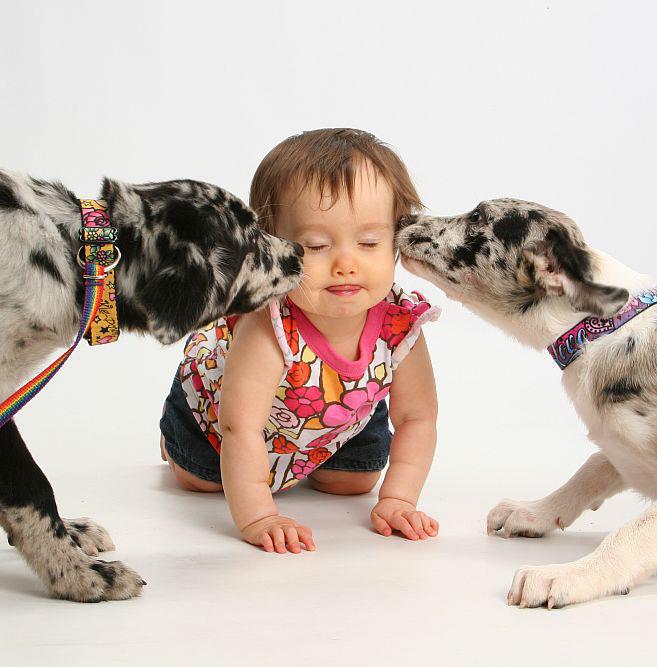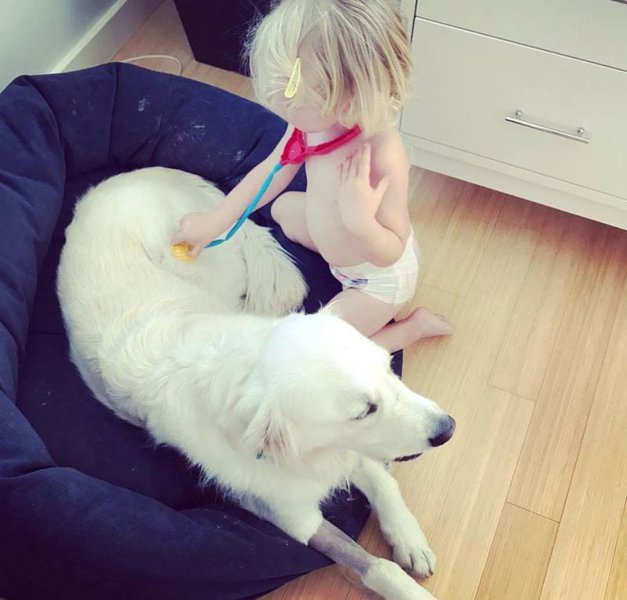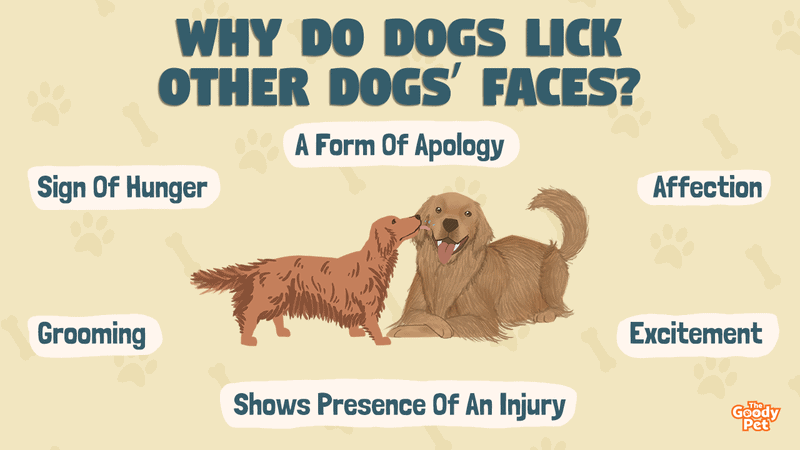Face-licking is a phenomenon that is commonly reported among dog owners, and a considerable amount of fido parents are unsure about whether to encourage this practice or separate the dogs. So, why do dogs lick other dogs’ faces?
Dogs lick other dogs’ faces to show affection and to indicate excitement, as well as as a sign of submission or as a form of apology. In the same vein, face-licking can indicate the presence of an injury, and dogs may take to excessive face-licking due to an obsessive-compulsive disorder or OCD.
Face-licking among dogs is completely normal, but there is every tendency for this seemingly harmless canine interaction to degenerate into aggression, which is why you constantly need to ensure that both dogs are on the same page. What is considered normal, healthy face-licking, as well as the kinds of licking that should be discouraged, is covered in this article.
But before we go further, let’s take a comprehensive look at some common reasons for face-licking among dogs.
Why Do Dogs Lick Other Dogs’ Faces?
Dogs lick each other’s faces for a variety of reasons, and these include a sign of affection, to apologize for bad behavior, to show submission, or due to an underlying medical condition.
Affection

Similar to human kisses, face-licking among dogs is a sign of affection among our furry friends. And you can also tell that the two pooches are affectionate towards each other when they take turns licking each other’s faces.
As A Form Of Apology
It may also interest you to know that dogs lick each other’s faces to apologize for either rough play or to communicate peaceful intent. And you can tell if the apology is accepted if the receiving dog licks back.
Excitement
Two dogs meeting each other either for the first time or after a long time apart may lick each other on the lips to express their excitement at meeting each other. In the same vein, licking each other on the lips is also a sign that both dogs are ready to play.
To Show Submission
Dogs are hierarchical by nature, and in an interaction between two dogs, you can often find the more submissive dog licking the dominant dog’s face in a bid to show respect and build rapport.
And in addition to face-licking, you can also tell that a dog is being submissive if you notice behavior such as:
- A dog rolling onto its back or lying belly up
- Flattening of the ears against the head
- Refusal to make eye contact with the other dog, just to mention a few
A Sign Of Hunger
Puppies are seemingly always hungry, and if you notice your young furry friend licking the mouth of an older dog, then such a pooch may be trying to communicate to the older dog that it is hungry.
This behavior is mostly observed among wild dogs. And according to the American Kennel Club, wild puppies typically lick their mother’s lips when she returns from a hunt, to get her to regurgitate some of the pre-digested meal.
This behavior of licking their mother’s lips to get food is also observed in domestic dogs, and it typically occurs when the puppies are placed on a solid food diet.
Grooming
Dogs are masters of self-grooming, but it isn’t uncommon to see a female dog with a litter licking her puppies’ faces in a bid to groom and keep them clean.
Presence Of An Injury
Canine face-licking is predominantly classified as social interaction, but there’s every possibility that a dog is licking another pooch’s face due to the presence of an injury on the face.
Sometimes, a dog may be licking another pooch’s face in a bid to tend to a cut, scrape, or even tumors that require urgent medical attention.
Hence, whenever you notice two dogs licking each other’s faces, the first point of action should be to examine the dog’s face for signs of injury. And if you discover an injury on the dog’s face, prompt emergency veterinary care should be provided for such a dog.
An Obsessive-Compulsive Disorder
Licking is quite helpful in calming dogs. And when certain dogs discover how calming this activity can be, they take one step further by excessively licking other pooches’ faces whenever there is an opportunity to do so. This behavior can, in turn, become compulsive.
What To Do When Your Dog Licks Other Dogs’ Faces?
Face-licking is a totally normal part of canine socialization; Hence, when you notice your furry friend licking another pooch’s muzzle, it is best that you leave them to continue with the act, while monitoring the interaction to prevent aggression.
What To Do If Your Dog Licks Too Much?
As harmless as face-licking among dogs is, there’s a tendency for pooches to overdo things, and this can generate a fair amount of tension and aggression among dogs.
That said, if you notice your pooch obsessively licking another dog, monitor the interaction between both dogs to be sure that the other dog is okay with being licked that much. And once you notice the slightest changes in the body language of the pooch that is being licked, it is advisable that you separate both dogs before the interaction degenerates into aggression.
If your adult dog is particularly fond of face-licking each and every pooch it comes across, you should find effective ways to refocus the dog’s attention. Teaching basic recall commands to your dog will be helpful, but you should never chastise or physically pull a dog away from such interactions, as this will only send the wrong signals to the licking dog.
Additionally, if you notice the face-licking pooch herding the receiving pooch around a space, you need to step in and interrupt the interaction before tempers start flaring.
Get Professional Help

Most times, excessive licking is a sign of an obsessive-compulsive disorder, and in this case, you can seek the help of a professional animal behaviorist to curb this behavior in your dog. Dogs typically take to excessive face-licking to mask their anxiety.
Also, you can easily tell that your dog’s face-licking is a form of disorder if, after providing sufficient exercise, attention, and toys to play with, its face-licking tendencies don’t reduce or cease.





